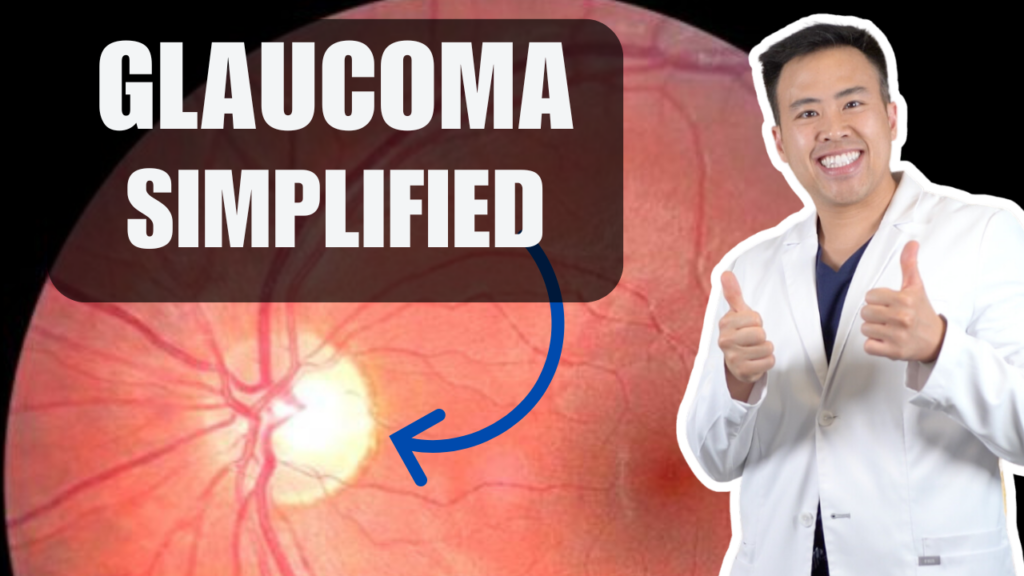Glaucoma is often referred to as the “silent thief of sight” because it can rob you of your vision without you even noticing. Over 4 million Americans are affected by glaucoma, yet half of them are completely unaware. That’s over 2 million people who don’t know they have a condition that has already caused blindness in more than 120,000 Americans.
I’m Dr. Jeffrey Tran, a board-certified ophthalmologist, and I’ve witnessed firsthand the devastating impact glaucoma can have on vision. If you’re looking for a straightforward explanation of what glaucoma is and why it’s so important to detect and treat early, you’re in the right place. Let’s dive in.
What Is Glaucoma?
In simple terms, glaucoma is a group of eye diseases that damage the optic nerve, leading to vision loss and potentially blindness.
To fully understand this, let’s break it down:
What Is the Optic Nerve. The optic nerve is like a cable that connects your eye to your brain. When light enters the eye, it hits the retina (a light-sensitive layer at the back of the eye). The retina then sends signals through the optic nerve to the brain, which processes them into the images you see.
Key Parts of the Eye – Here are some essential parts of the eye to help tie everything together:
- Cornea: The clear front part of the eye, the part you touch when putting on contact lenses.
- Iris: The colored part of your eye.
- Lens: The part that eventually develops cataracts as you age.
- Ciliary Body: Produces the fluid in your eye called aqueous humor. Think of this as a faucet.
- Angle: The drainage system where the aqueous humor exits the eye.
How Does Glaucoma Affect the Eye?
In glaucoma, the optic nerve is damaged, which leads to permanent vision loss. The primary culprit? Eye pressure.
Eye Pressure and Glaucoma
Eye pressure is measured in millimeters of mercury (mmHg). A normal range is between 10-21 mmHg. High eye pressure is commonly associated with glaucoma, although not always. Some people develop glaucoma even with normal eye pressures, a condition known as normal-tension glaucoma.
Increased eye pressure occurs when the drainage system in the eye becomes clogged. The ciliary body continues to produce fluid, but it has nowhere to go. This buildup of fluid increases pressure inside the eye, which in turn damages the optic nerve.
Symptoms of Glaucoma
Glaucoma is known as the “silent thief of sight” because it’s often symptomless in its early stages. Vision loss typically begins in the peripheral (side) vision. Over time, it progresses to tunnel vision and, without treatment, can eventually cause complete blindness.
What Causes Glaucoma?
The exact cause of glaucoma isn’t fully understood. However, several risk factors increase your likelihood of developing the condition:
- Age: Risk increases as you get older.
- Ethnicity: African Americans and Hispanic Americans are at higher risk for certain types of glaucoma.
- Thin Corneas: Thinner corneas can increase susceptibility.
- Eye Pressure: The only modifiable risk factor.
Treatment Options for Glaucoma
Treatments for glaucoma focus on lowering eye pressure. Here’s how:
First we have medications – Eye drops reduce the production of aqueous humor (turning down the faucet).
Next, have lasers like selective laser trabeculoplasty. These help improve drainage (like pouring Drano into a clogged sink).
Third, we can do surgery. When medications and lasers aren’t enough, surgical options can create new drainage pathways (fixing the plumbing).
Eye doctors often combine these treatments to effectively manage eye pressure and slow the progression of vision loss. Unfortunately, even with treatment, some people may still experience vision loss.
The Importance of Early Detection
Glaucoma progresses slowly, and the vision loss it causes is permanent. Regular eye exams are the best way to catch glaucoma early and start treatment before significant damage occurs.
You only get two eyes, so please take care of them. Schedule regular check-ups with your eye doctor, especially if you’re at higher risk for glaucoma. Early detection can make all the difference in preserving your sight.

